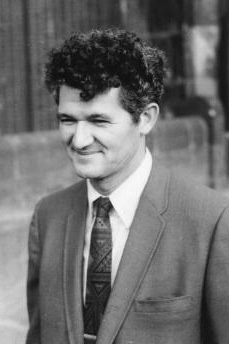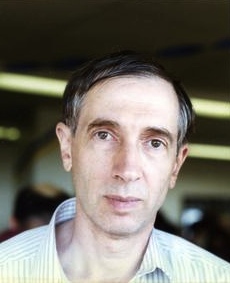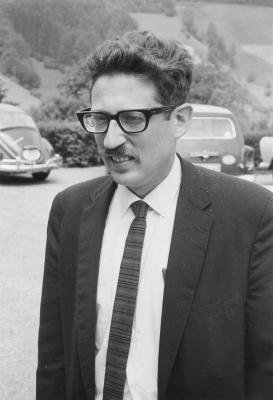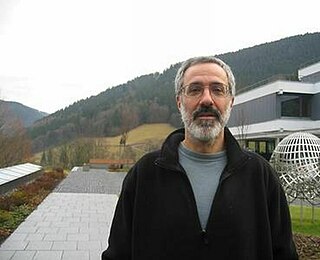
Peter David Lax is a Hungarian-born American mathematician and Abel Prize laureate working in the areas of pure and applied mathematics.

Béla Bollobás FRS is a Hungarian-born British mathematician who has worked in various areas of mathematics, including functional analysis, combinatorics, graph theory, and percolation. He was strongly influenced by Paul Erdős from the age of 14.

László Lovász is a Hungarian mathematician and professor emeritus at Eötvös Loránd University, best known for his work in combinatorics, for which he was awarded the 2021 Abel Prize jointly with Avi Wigderson. He was the president of the International Mathematical Union from 2007 to 2010 and the president of the Hungarian Academy of Sciences from 2014 to 2020.

Richard Peter Stanley is an Emeritus Professor of Mathematics at the Massachusetts Institute of Technology, and an Arts and Sciences Distinguished Scholar at the University of Miami. From 2000 to 2010, he was the Norman Levinson Professor of Applied Mathematics. He received his Ph.D. at Harvard University in 1971 under the supervision of Gian-Carlo Rota. He is an expert in the field of combinatorics and its applications to other mathematical disciplines.

David Eisenbud is an American mathematician. He is a professor of mathematics at the University of California, Berkeley and former director of the then Mathematical Sciences Research Institute (MSRI), now known as Simons Laufer Mathematical Sciences Institute (SLMath). He served as Director of MSRI from 1997 to 2007, and then again from 2013 to 2022.

Herbert Saul Wilf was an American mathematician, specializing in combinatorics and graph theory. He was the Thomas A. Scott Professor of Mathematics in Combinatorial Analysis and Computing at the University of Pennsylvania. He wrote numerous books and research papers. Together with Neil Calkin he founded The Electronic Journal of Combinatorics in 1994 and was its editor-in-chief until 2001.

Daniel J. Kleitman is an American mathematician and professor of applied mathematics at MIT. His research interests include combinatorics, graph theory, genomics, and operations research.

The Borsuk problem in geometry, for historical reasons incorrectly called Borsuk's conjecture, is a question in discrete geometry. It is named after Karol Borsuk.

In mathematical programming and polyhedral combinatorics, the Hirsch conjecture is the statement that the edge-vertex graph of an n-facet polytope in d-dimensional Euclidean space has diameter no more than n − d. That is, any two vertices of the polytope must be connected to each other by a path of length at most n − d. The conjecture was first put forth in a letter by Warren M. Hirsch to George B. Dantzig in 1957 and was motivated by the analysis of the simplex method in linear programming, as the diameter of a polytope provides a lower bound on the number of steps needed by the simplex method. The conjecture is now known to be false in general.
Polyhedral combinatorics is a branch of mathematics, within combinatorics and discrete geometry, that studies the problems of counting and describing the faces of convex polyhedra and higher-dimensional convex polytopes.

Discrete & Computational Geometry is a peer-reviewed mathematics journal published quarterly by Springer. Founded in 1986 by Jacob E. Goodman and Richard M. Pollack, the journal publishes articles on discrete geometry and computational geometry.

Alexander Lubotzky is an Israeli mathematician and former politician who is currently a professor at the Weizmann Institute of Science and an adjunct professor at Yale University. He served as a member of the Knesset for The Third Way party between 1996 and 1999. In 2018 he won the Israel Prize for his accomplishments in mathematics and computer science.

Jeffry Ned Kahn is a professor of mathematics at Rutgers University notable for his work in combinatorics.

Irit Dinur is an Israeli computer scientist. She is professor of computer science at the Weizmann Institute of Science. In 2024 she was appointed a permanent faculty member in the School of Mathematics of the Institute for Advanced Study. Her research is in foundations of computer science and in combinatorics, and especially in probabilistically checkable proofs and hardness of approximation.
In geometry, more specifically in polytope theory, Kalai's 3d conjecture is a conjecture on the polyhedral combinatorics of centrally symmetric polytopes, made by Gil Kalai in 1989. It states that every d-dimensional centrally symmetric polytope has at least 3d nonempty faces.

Isabella Novik is a mathematician who works at the University of Washington as the Robert R. & Elaine F. Phelps Professor in Mathematics. Her research concerns algebraic combinatorics and polyhedral combinatorics.
Shmuel Friedland is an Israeli-American mathematician.
Dietmar Arno Salamon is a German mathematician.
Read's conjecture is a conjecture, first made by Ronald Read, about the unimodality of the coefficients of chromatic polynomials in the context of graph theory. In 1974, S. G. Hoggar tightened this to the conjecture that the coefficients must be strongly log-concave. Hoggar's version of the conjecture is called the Read–Hoggar conjecture.
In theoretical computer science, a function is said to exhibit quasi-polynomial growth when it has an upper bound of the form for some constant , as expressed using big O notation. That is, it is bounded by an exponential function of a polylogarithmic function. This generalizes the polynomials and the functions of polynomial growth, for which one can take . A function with quasi-polynomial growth is also said to be quasi-polynomially bounded.














